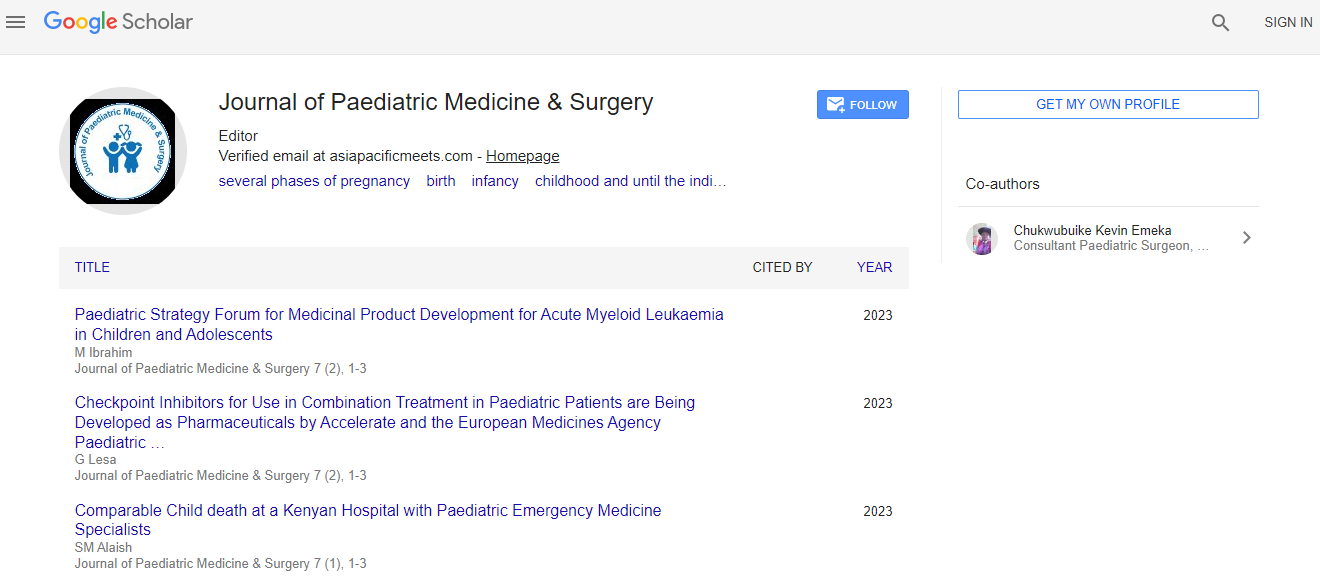Health Care, Nutrition & Pediatrics Meet 2019: Pediatric airway management - Nasser Mohamed - Sheikh Khalifa Medical City
*Corresponding Author:
Copyright: © 2019 . This is an open-access article distributed under the terms of the Creative Commons Attribution License, which permits unrestricted use, distribution, and reproduction in any medium, provided the original author and source are credited.
Abstract
Airway management is a main skill for all medical staff to practice, particularly within demanding scenarios. To address this, we will create this workshop of airway management for introducing advanced airway techniques to all medical staff (physician, resident’s nurses and fellows) Emergency airway management is associated with a high complication rate. Securing an airway is a vital mission for the anesthesiologist. The pediatric patients have vital physiological and anatomical differences related with grown-ups, which impact on the techniques and tools that the anesthesiologist might choose to provide safe and effective control of the airway. Evaluating the patient earlier to airway management is significant to identify patients with improved risk of failed airways pediatric airway management should be well planned and systematic. The tongue is larger and the mandible shorter in the young child. In infancy, the child is an obligate nasal breather until 5 months of age. Prominent adenoids and tonsils are frequently found in preschool age children and are a frequent reason to present for elective ENT surgery. These factors all contribute to loss of upper airway space which can lead to difficulty with mask ventilation, obstruction during spontaneous ventilation, and can make laryngoscopy more difficult. Besides, sedatives, hypnotic, and anesthetic drugs origin loss of tone of upper airway muscles which can itself effect in potential upper airway obstruction. The hypopharynx of the pediatric patient is relatively shorter in height and narrower in width. On cross section, the airway of a grown-up is more elliptical than that of the youngster. This has implication for supraglottic airway placement. The airway of the pediatric patient differs in several ways which impact the anesthesiologist's management of the airway. Predictably, these differences are most pronounced at birth and the most unaware (non-adult like) airway is encountered in neonates and infants under 1 year of age. Observational data bears out this point as laryngoscopy is more likely to yield suboptimal views in this age group. Moreover, there are is some of pathological processes, typically seen in the pediatric population, which present unique anatomical or functional difficulties in airway management. The occurrence of one of these conditions or syndromes can predict a “difficult airway.” Many instruments and devices are currently available which have been designed to aid in airway management. Some of these have been adapted from grown-up designs, but in several cases require alterations in technique to account for the anatomical and physiological differences of the pediatric patient. This review focuses on assessment and management of pediatric airway and highlights the unique challenges encountered in children. While this typically does not affect laryngoscopic opinion, it can make insertion of the endotracheal tube more challenging or more traumatic. Especially in suboptimal views or with indirect video laryngoscopy, the endotracheal tube will have a higher tendency to collide with or become obstructed on the anterior commissure of the vocal folds.
This workshop will label the steps in appropriate airway management these steps include clinical assessment, preparation of equipment and staff, and a progression through a series of interventions. A moral foundation of basic skills, such as understanding of pediatric airway-anatomy, head positioning, and correct bag-valve-mask or Bag-mask Ventilation (BVM), are necessary for appropriate airway management. The majority of patients needful Endotracheal Intubation (ETI) can be positively intubated with Rapid Sequence Intubation (RSI). A difficult airway may occasionally be encountered and the medical staff must have unusual methods for the support of ventilation and oxygenation if RSI failed Video laryngoscopes are claimed to improve airway management. Many trainings showed an equal or better glottic view using the Glide scope compared with direct laryngoscopy in adults and in paediatric patients. Many case reports also described positive intubation in patients with a hard airway.
Learning Objectives
At the decision of this educational participants, workshop will be able to apply a thorough understanding and practical knowledge of the basics of airway assessment in your clinical practice recognizes the signs of potentially hard intubation and airway management. Develop a plan for dealing with a known tough airway. Discuss indications for various airway management devices. Develop effective management approaches to deal with interesting airway scenarios. Demonstrate working practice and knowledge of a change of airway management devices (oropharyngeal tube - Nasopharyngeal tune - Laryngeal mask airway -Endo tracheal tube - Ambu bag - video laryngoscop).

 Spanish
Spanish  Chinese
Chinese  Russian
Russian  German
German  French
French  Japanese
Japanese  Portuguese
Portuguese  Hindi
Hindi 